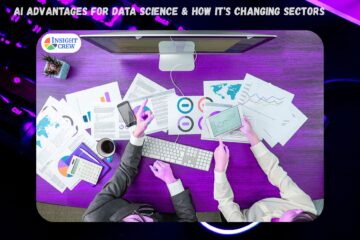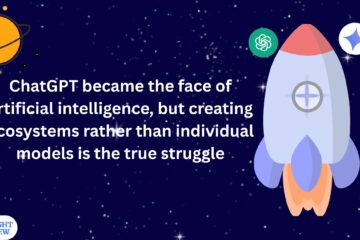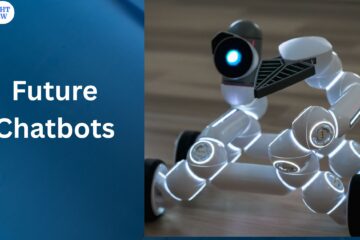Have you ever had the impression that you’re always catching up in the realm of technology? Predictive analytics is all the rage one minute, and then generative AI takes centre stage. It’s similar to attempting to choose between a magic wand and a crystal ball; both are strong, but serve quite distinct functions. What is the true distinction between generative and predictive artificial intelligence, you may be wondering?
Assume you are in charge of a marketing effort. To determine who is most likely to purchase your goods, predictive AI may examine historical consumer behaviour. However, generative AI may create a variety of ad versions, complete with attention-grabbing headlines and eye-catching images. Can you see the difference? Prediction is the focus of one, while creation is the focus of the other.
However, it’s not always that easy. Both forms of AI are developing rapidly, making it increasingly difficult to distinguish between what is and what is not viable. Let’s examine the main distinctions, advantages, and applications of generative and predictive artificial intelligence in more detail.
Exploring Generative AI
The artist of the AI realm is generative AI. It all comes down to producing something original, be it code, prose, pictures, or music. Imagine it as an artificial intelligence (AI) that, using its knowledge, can generate new possibilities. A McKinsey analysis claims that generative AI has the potential to boost the global economy by trillions of dollars. McKinsey: Generative AI’s economic potential.
How it operates: Generative AI models create new, comparable data by first learning the structures and patterns seen in a dataset. It’s similar to displaying hundreds of paintings to a computer to teach it how to recognise and replicate them.
Important technologies: Include Techniques such as transformer models, variational autoencoders (VAEs), and generative adversarial networks (GANs), which are widely used in this discipline.
Examples from the real world:
- constructing lifelike representations of nonexistent individuals.
- composing blog entries or marketing content.
- creating software application code.
- writing music in a variety of genres.
Generative AI’s Benefits
Unleashes creativity: You can push the limits of what is feasible and investigate novel concepts with the aid of generative AI.
Automates content creation: It can greatly expedite the process of designing products, marketing collateral, and other things.
Experiences can be made more relevant and engaging by using generative AI to customise content for specific consumers.
Solves complicated issues: It can be applied to the development of novel materials, medications, and the optimisation of complex systems.
The Drawbacks of Artificial Intelligence
Resource-intensive: A substantial amount of data and processing power may be needed to train generative AI models.
Ethical issues: There is a significant risk of abuse, including the production of deepfakes and the dissemination of false information. The Brookings Institution has pointed out that generative AI’s ethical ramifications need to be carefully examined. Brookings: The morality of generative artificial intelligence
Control of quality: Generative AI models don’t always provide flawless results; human inspection and editing may be necessary.
Amplification of bias: The generative AI model may reinforce or even magnify biases present in the training data.
Knowing How Predictive AI Works
The fortune teller of the AI realm is predictive AI. It forecasts future patterns and consequences using the data that is currently available. Imagine it as an artificial intelligence (AI) that is able to recognise patterns and predict future events. Research indicates that supply chain management makes extensive use of predictive analytics to estimate demand and maximise inventories. What is predictive analytics, according to Oracle?
How it operates: To find trends and connections, predictive AI models examine past data. Based on fresh data, they then forecast future results using similar patterns.
Important technologies: Techniques including time series analysis, regression analysis, and classification algorithms are used in this subject.
Examples from the real world:
- forecasting client attrition.
- making sales projections.
- identifying fraudulent activity.
- evaluating the risk of credit.
The Benefits of AI Prediction
Data-driven decision-making: You can make better decisions by using the insights that predictive AI offers.
Increased productivity: By automating processes like risk assessment and fraud detection, it frees up human workers to concentrate on other projects.
Personalised experiences: By using predictive AI to tailor offerings and recommendations, consumer satisfaction can be raised.
By identifying possible issues before they arise, proactive problem-solving enables you to take preventive measures.
The Predictive AI’s Drawbacks
Dependency on data: To be accurate, predictive AI models need big, high-quality datasets.
Limited creativity: While predictive AI excels at forecasting, it is unable to provide original content or ideas.
Overfitting: When predictive AI models concentrate too much on training data, they may perform poorly on fresh data.
Explainability: It can be challenging to comprehend the reasoning behind a certain forecast produced by a predictive AI model.
Key Distinctions Between Predictive and Generative AI
Here is a comparison table that highlights the main distinctions between generative and predictive AI to help you understand them:

As you can see, the functions of generative and predictive AI are significantly different. Predictive AI is your data-driven advisor, while generative AI is your creative collaborator.
Use Cases: The Highlights of Every AI
Let’s examine some particular situations where the differences between generative and predictive AI can have a significant effect.
Applications of Generative AI
Marketing includes writing product descriptions, coming up with ad copy, and making marketing graphics.
Product development includes designing new items, producing prototypes, and setting up testing environments in virtual worlds.
Software development includes developing user interfaces, automating testing, and generating code.
Healthcare: developing novel medications, making individualised treatment regimens, and producing training medical pictures. AI in Healthcare: How Generative AI is Transforming Diagnosis, Treatment & Drug Discovery goes into additional detail about the revolutionary possibilities of AI in healthcare, particularly generative AI.
Use Cases for Predictive AI
Finance: Identifying fraud, estimating credit risk, and forecasting stock values.
Retail: Predicting sales, maximising stock levels, and tailoring suggestions.
Manufacturing: Improving quality control, streamlining production procedures, and anticipating equipment problems.
Healthcare: Forecasting disease outbreaks, identifying high-risk patients, and predicting readmissions.
Making the Correct Decision
Which kind of AI is best for you, then? Your unique demands and objectives will determine this.
Select generative AI if you must: Produce original content, investigate novel concepts, or find innovative solutions to challenging issues.
Select predictive AI if you need to forecast future events, make data-driven decisions, or increase productivity.
Perhaps you require both! Many businesses are discovering that the best strategy is to combine predictive and generative AI to produce a potent synergy. Businesses are increasingly incorporating both generative and predictive AI to improve their operations, according to a recent Deloitte report. Deloitte: Predictive and generative AI: A dynamic combination


